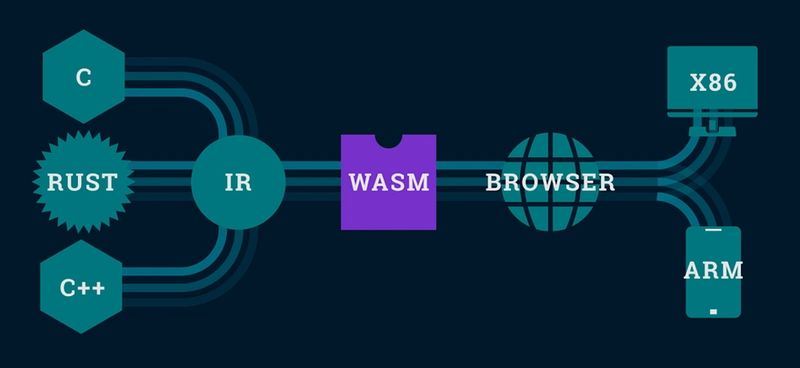Asynchronous Programming: Callbacks, Promises, and Async/Await
Asynchronous vs. Synchronous Programming Synchronous Programming: In synchronous programming, tasks are executed sequentially. The program waits for a task to complete before moving on to the next one. This approach can lead to inefficiencies, especially during time-consuming operations like network requests or file processing. Example of Synchronous Code: function task1() { console.log("Task 1 started"); for (let i = 0; i { const data = "Data received"; // Simulate fetched data callback(data); // Execute the callback with the data }, 2000); } fetchData((data) => { console.log(data); // Logs after data is fetched }); Explanation: The fetchData function simulates a delay using setTimeout. Once the delay ends, the callback is executed with the fetched data. Issues with Callbacks: Callback Hell: When multiple asynchronous operations depend on each other, deeply nested callbacks make the code hard to read and maintain. Promises Definition: A promise is an object representing the eventual completion (or failure) of an asynchronous operation and its resulting value. Benefits: Simplifies chaining asynchronous operations. Provides better error handling compared to callbacks. Example: function fetchData() { return new Promise((resolve, reject) => { console.log("Fetching data..."); setTimeout(() => { const data = "Data received"; resolve(data); // Resolve the promise with data }, 2000); }); } fetchData() .then(data => { console.log(data); // Logs after promise is resolved }) .catch(error => { console.error(error); // Handles errors }); Explanation: Promises improve readability by chaining .then() for success and .catch() for error handling. They eliminate the nested structure typical of callbacks. Async/Await Definition: Async/await is syntactic sugar built on top of promises, enabling you to write asynchronous code that looks and behaves more like synchronous code. Benefits: Improves code readability and maintainability. Handles asynchronous logic more straightforwardly. Example: async function fetchAndLogData() { try { const data = await fetchData(); // Wait for the promise to resolve console.log(data); // Logs after data is fetched } catch (error) { console.error(error); // Handles errors } } await fetchAndLogData(); Explanation: The async keyword indicates the function contains asynchronous code. The await keyword pauses execution until the promise resolves, making the code appear synchronous while remaining non-blocking. Summary of Key Points Synchronous vs. Asynchronous: Synchronous code blocks execution until tasks complete. Asynchronous code allows other tasks to execute concurrently. Callbacks: A function passed to handle asynchronous results. Susceptible to callback hell with complex dependencies. Promises: A cleaner alternative to callbacks, supporting chaining and error handling. Async/Await: Makes asynchronous code more readable and maintainable. Support ❤️ It took a lot of time and effort to create this material. If you found this article useful or interesting, please support my work with a small donation. It will help me to continue sharing my knowledge and ideas. Make a contribution or Subscription to the author's content: Buy me a Coffee, Patreon, PayPal.

Asynchronous vs. Synchronous Programming
Synchronous Programming:
- In synchronous programming, tasks are executed sequentially. The program waits for a task to complete before moving on to the next one.
- This approach can lead to inefficiencies, especially during time-consuming operations like network requests or file processing.
Example of Synchronous Code:
function task1() {
console.log("Task 1 started");
for (let i = 0; i < 1e9; i++); // Simulating a long task
console.log("Task 1 completed");
}
function task2() {
console.log("Task 2 started");
for (let i = 0; i < 1e9; i++); // Simulating a long task
console.log("Task 2 completed");
}
task1(); // Executes first
task2(); // Executes after task1 is completed
Asynchronous Programming:
- Asynchronous programming allows tasks to run independently, enabling the program to continue executing other operations while waiting for some tasks to complete.
- This is especially useful for tasks like fetching data from a server, where waiting could otherwise freeze the user interface.
Why Do We Need Asynchronous Programming?
- Responsiveness: Prevents the UI from becoming unresponsive during long operations.
- Efficiency: Allows simultaneous execution of multiple operations, optimizing resource usage.
- User Experience: Enhances interactions by ensuring smooth and uninterrupted workflows.
Callbacks
Definition: A callback is a function passed as an argument to another function, executed after the completion of a task.
Example:
function fetchData(callback) {
console.log("Fetching data...");
setTimeout(() => {
const data = "Data received"; // Simulate fetched data
callback(data); // Execute the callback with the data
}, 2000);
}
fetchData((data) => {
console.log(data); // Logs after data is fetched
});
Explanation:
- The
fetchDatafunction simulates a delay usingsetTimeout. - Once the delay ends, the callback is executed with the fetched data.
Issues with Callbacks:
- Callback Hell: When multiple asynchronous operations depend on each other, deeply nested callbacks make the code hard to read and maintain.
Promises
Definition: A promise is an object representing the eventual completion (or failure) of an asynchronous operation and its resulting value.
Benefits:
- Simplifies chaining asynchronous operations.
- Provides better error handling compared to callbacks.
Example:
function fetchData() {
return new Promise((resolve, reject) => {
console.log("Fetching data...");
setTimeout(() => {
const data = "Data received";
resolve(data); // Resolve the promise with data
}, 2000);
});
}
fetchData()
.then(data => {
console.log(data); // Logs after promise is resolved
})
.catch(error => {
console.error(error); // Handles errors
});
Explanation:
- Promises improve readability by chaining
.then()for success and.catch()for error handling. - They eliminate the nested structure typical of callbacks.
Async/Await
Definition: Async/await is syntactic sugar built on top of promises, enabling you to write asynchronous code that looks and behaves more like synchronous code.
Benefits:
- Improves code readability and maintainability.
- Handles asynchronous logic more straightforwardly.
Example:
async function fetchAndLogData() {
try {
const data = await fetchData(); // Wait for the promise to resolve
console.log(data); // Logs after data is fetched
} catch (error) {
console.error(error); // Handles errors
}
}
await fetchAndLogData();
Explanation:
- The
asynckeyword indicates the function contains asynchronous code. Theawaitkeyword pauses execution until the promise resolves, making the code appear synchronous while remaining non-blocking.
Summary of Key Points
-
Synchronous vs. Asynchronous:
- Synchronous code blocks execution until tasks complete.
- Asynchronous code allows other tasks to execute concurrently.
-
Callbacks:
- A function passed to handle asynchronous results.
- Susceptible to callback hell with complex dependencies.
-
Promises:
- A cleaner alternative to callbacks, supporting chaining and error handling.
-
Async/Await:
- Makes asynchronous code more readable and maintainable.
Support ❤️
It took a lot of time and effort to create this material. If you found this article useful or interesting, please support my work with a small donation. It will help me to continue sharing my knowledge and ideas.
Make a contribution or Subscription to the author's content: Buy me a Coffee, Patreon, PayPal.










































































































































































![[The AI Show Episode 144]: ChatGPT’s New Memory, Shopify CEO’s Leaked “AI First” Memo, Google Cloud Next Releases, o3 and o4-mini Coming Soon & Llama 4’s Rocky Launch](https://www.marketingaiinstitute.com/hubfs/ep%20144%20cover.png)






































































































































































































![Blue Archive tier list [April 2025]](https://media.pocketgamer.com/artwork/na-33404-1636469504/blue-archive-screenshot-2.jpg?#)
































.png?#)










-Baldur’s-Gate-3-The-Final-Patch---An-Animated-Short-00-03-43.png?width=1920&height=1920&fit=bounds&quality=70&format=jpg&auto=webp#)











![Nanoleaf Announces New Pegboard Desk Dock With Dual-Sided Lighting [Video]](https://www.iclarified.com/images/news/97030/97030/97030-640.jpg)

























































































































![Apple's Foldable iPhone May Cost Between $2100 and $2300 [Rumor]](https://www.iclarified.com/images/news/97028/97028/97028-640.jpg)
![Apple Releases Public Betas of iOS 18.5, iPadOS 18.5, macOS Sequoia 15.5 [Download]](https://www.iclarified.com/images/news/97024/97024/97024-640.jpg)




































































































































